
Immobility can lead to rather difficult mental and practical challenges, and may additionally lead to serious complications. People who are suffering from chronic illnesses, those in the terminal stages of cancer, old people, and individuals who have experienced a stroke and are now dealing with paralysis may be bedridden for the rest of their lives. Being in bed means that these patients remain inactive unless they are helped by their family, friends, nursing staff, or certain physiotherapy specialists. Permanent care can prevent some of the potential complications of being bedridden and largely immobile but, unfortunately, these patients' immobility at some point results in at least one or even multiple complications.
Immobility can Complicate Life
A fully mobile person turns at least once in every quarter of an hour while sleeping, though they may have no idea that they are doing it. This only points to the necessity of changing positions — even when we are unconscious, we move fairly frequently, after all. A regular change of position helps blood to flow normally, prevents insufficient supply with blood to those parts of the body that are exposed to pressure and stimulates the transfer of the body's fluids.
In immobile people, prolonged pressure on the exposed body parts can lead to improper blood supply, blood congestion, and insufficient supply with oxygen and nutrients. The areas of these patients' bodies that are constantly in direct contact with the surface they are lying on, their beds, become more susceptible to so-called pressure sores or bed sores. Pressure sores or decubital ulcers predominantly form on the buttocks, on heels and hips of immobile patients. Basically, these sores will form on the most exposed body parts. The problem with decubital ulcers is that they cannot heal as the pressure is still present, are rather painful, can get infected and if not taken care of properly, and they also tend to extend and affect increasingly larger portions of the skin. Pressure ulcers are the most common complication of immobility.
Apart from pressure ulcers, a bedridden patient is also at risk of frequently suffering from pneumonia. Atelectasis is another possible complication of immobility. Congestion in the veins is yet additional complication which can subsequently result in thrombosis. Thrombosis of deep veins is a huge risk factor for pulmonary embolism, which can be fatal.
As for the urinary system the risk of kidney stones is higher in immobile patients compared to the mobile ones. These people suffer from frequent urinary infections as well.
In the first months, since the patient does not move at all, the muscles deteriorate and prolonged muscle inactivity leads to muscle wasting (or atropy). Even bone tissue is affected by progressive demineralization.
Prevention of pressure ulcers can be successfully achieved by regular turning of the patient. This task may be hard for care givers, but it should be performed every two hours to successfully help the patient prevent bed sores. If by any chance these skin changes eventually occur, the family will be given instructions on how to take care of them and how to prevent infection. Today, there are anti-decubital cushions available that can make the process of turning much easier and safer for care givers. In case of infections immobile patients are always prescribed antibiotics.
The Knees are Very Vulnerable
The knee is one of the most vulnerable joints in the human body. This is why pain in this area can be experienced by everybody and at any time in one's life. Pain in the knees which occurs at night can be quite annoying and disturbing. There are several conditions which are characterized by knee pain which happens only during the night and no other time of day. As soon as this kind of pain is experienced, one is highly advised to consult a doctor at once, before any underlying condition that is provoking this kind of pain becomes serious and more dangerous.
Patellar tendinopathy is a kind of injury to the knee typically called jumper’s knee. It usually occurs during sports like basketball or volleyball. Patellar tendinopathy is one of the most frequent causes of pain in the knee at night, particularly in people who regularly engage in different physical activities and sports. The symptoms of patellar tendinopathy are not very severe initially, but they gradually become more intense. There is no quick fix for patellar tendinopathy as it can only be treated with ice packages, applying massages to the area in question and proper exercises done in order to regain the required strength to the knee, all of which are parts of a very time-consuming process. The sooner the problem is dealt with, the less pain the person will suffer from.
Arthritis is an inflammation of a joint/joints typically accompanied by pain, swelling and stiffness. What happens when arthritis affects the knee is that the tissue in the knee area which protects the bones gets inflamed and sometimes torn up. Obese people and those who have more than fifty years are highly likely to develop arthritis in comparison with younger individuals. Sometimes arthritis happens because of some kind of an injury to the knee and the pain associated with arthritis does not remain constant and is more likely to change its intensity according to the weather changes.There are several different kinds of ligaments in the knees, three to be exact and they are the anterior cruciate ligament, the posterior cruciate ligament and the medial collateral ligament. Any kind of injury to these ligaments could provoke knee pain at night. The role of these ligaments is to help the knee remain firm and limit unnecessary movements. Should the knees happen to swell, it would be an almost certain sign of this type of injury to the knee.





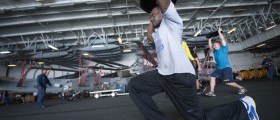
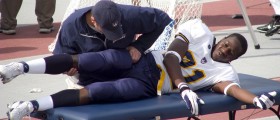



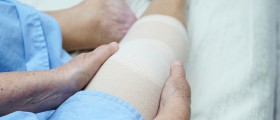

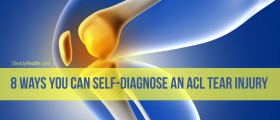

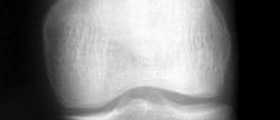

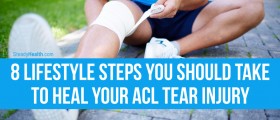
Your thoughts on this
Loading...